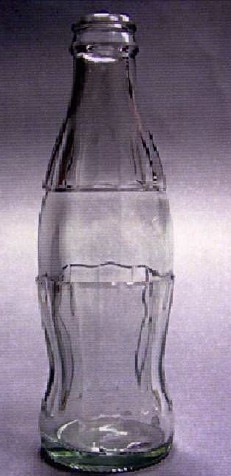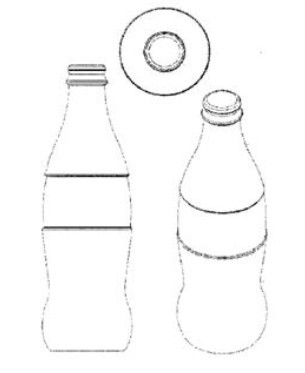

The new COCA-COLA bottle (without grooves) is not a shape trademark
The company was therefore granted a trademark registration for the shape of this bottle. However, shapes are difficult to protect as a trademark. This is because the consumer is not used to deducing the origin of products from the shape of those products or their packaging. It is assumed that there can only be sufficient distinctiveness to be eligible for trademark registration when a shape significantly deviates from the norm.

New bottle
In 2011, the Coca-Cola Company introduced a new type of bottle, the ‘contour bottle without grooves’. According to the Coca-Cola Company, the public would associate this bottle with the famous ‘contour bottles with grooves’, as the shape of the new bottle was a variant on this bottle. The company wanted to protect the shape of this new bottle as a trademark and applied to the European trademark organisation (OHIM). The application was, among others, submitted for metal, glass and plastic bottles and alcohol-free drinks. The examiner from OHIM rejected this application because the trademark for the bottles concerned lacked distinctiveness and the Coca-Cola Company could not prove that the trademark had acquired distinctiveness through use. In other words: consumers would not be able to derive from the shape of the bottle alone that it contained a soft drink from COCA-COLA.

The Coca-Cola Company lodged an appeal against the decision of the OHIM examiner. In 2014, this appeal was rejected because the shape of the bottle was not distinctive enough and the Coca-Cola Company did not prove that the relevant trademark had acquired distinctiveness through use.
Lack of distinctiveness
Coca-Cola Company decided to appeal the Court decision. Unfortunately for the Coca-Cola Company, this appeal was rejected as well. According to the Court, the bottle consists of a combination of different elements, none of which have any distinctiveness. Although the Court felt that the top of the bottle showed some originality, it was concluded that the bottle did not sufficiently differ from all the other types of bottles already on the market. According to the Coca-Cola Company, the new ‘contour bottle without grooves’ had acquired distinctiveness because this trademark was intensively used as part of the ‘contour bottle with grooves’. The Court was not persuaded by this argument either. With regard to the evidence, the Court further noted that it contained many inaccuracies and incoherencies. Without these, the Coca-Cola Company might have had more of a chance.
Coca-Cola Company can appeal once more to the European Court. It is not yet known whether it will do so or not.
